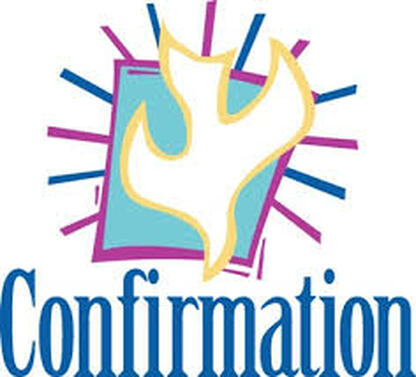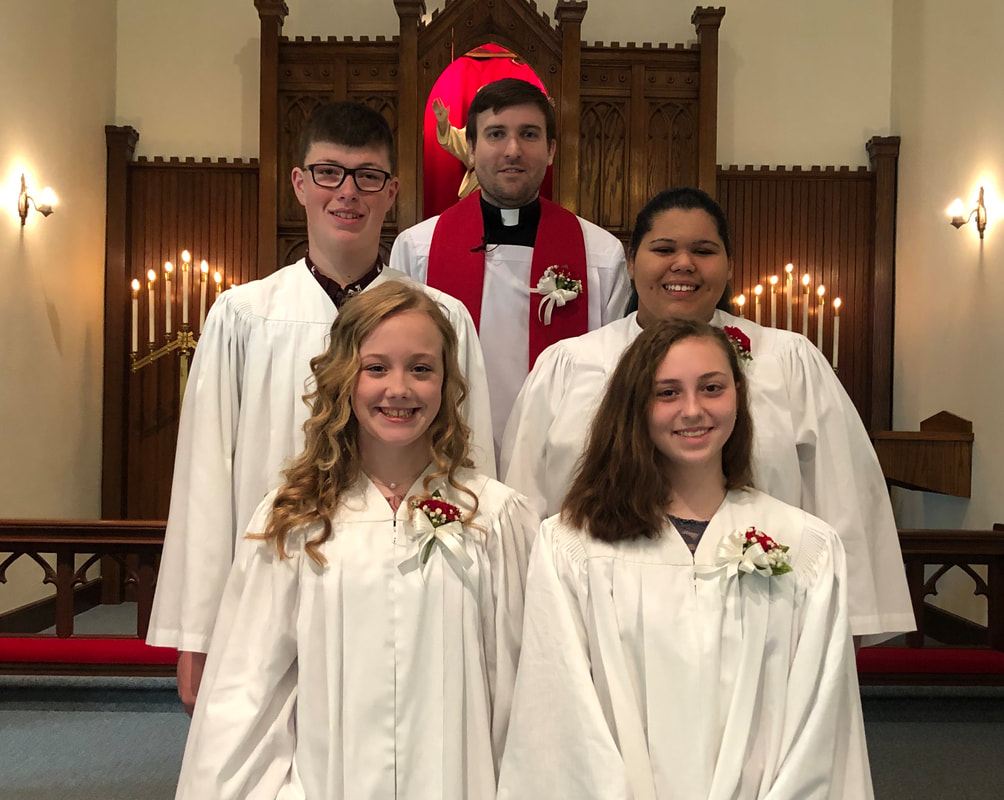|
What Is Confirmation?
Confirmation in the Lutheran Church is a public profession of faith prepared for by long and careful instruction. In English, it is called "affirmation of baptism", and is a mature and public reaffirmation of the faith which "marks the completion of the congregation's program of confirmation ministry". Martin Luther notes in Luther’s Small Catechism: “Confirmation is a public rite of the church preceded by a period of instruction designed to help baptized Christians identify with the life and mission of the Christian community. [It] provides opportunity for the individual Christian, relying on God’s promises given in Holy Baptism, to make a personal public confession of the faith . . .” The Lutheran Faith You can get on line material on Luther's Small Catechism and other documents on the Luther Faith from the web site THE BOOK OF CONCORD (The Confessions of the Lutheran Church). |
History of Confirmation
In the early church, when adults were the center of its outreach, the church developed a “catechumenate.” Though the catechumenate took many forms, the content was a confession of faith, instruction in the Word of God, Baptism, anointing with oil, laying on of hands, and Holy Communion. In the fifth century, leaders of Western churches began to describe a bishop’s anointing of a priest with oil and the laying on of hands as a confirmation. Then, the initiation rites of those churches were divided into three separate parts: Baptism, confirmation, and first Communion. The claim made by the church in the Middle Ages was that the grace of God was given in Baptism for the remission of sins, while anointing of oil and the laying on of hands in confirmation resulted in a special outpouring of the Holy Spirit who gave strength for daily living. In 1150, confirmation became one of the seven sacraments of the church. The Middle Age practice of confirmation became a target of Luther’s Reformation. He was amazed that the laying on of hands and anointing were called a sacrament, since neither was commanded by Christ nor ever endorsed as a channel of God’s grace. Luther’s focus was instruction in the Word of God, and he preached sermons on the key teachings of the Scriptures. He then wrote the Small and Large Catechisms for parents and pastors. Today in the LCMS, some 99 percent of the congregations offer the rite of confirmation. The aim remains the same as the early church’s: to answer Christ’s call to go to the nations and make disciples by baptizing and teaching. In our society, outreach among children, youth and their parents presents the best opportunities to connect with the non-connected. Expert of a Commentary from Sept 1, 2010 LCMS Report Online By Marvin Bergman |
The Lutheran Church - Missouri Synod
St. John's Lutheran Church
109 Maple St.
P.O. Box 98
Burt, IA 50522
Phone : 515.924.3344
Office Email : [email protected]
Pastor's Office : 515-924-3388
Pastor's Email : [email protected]
Office Hours at Burt: Tuesday, Wednesday, and Thursdays
St. John's Lutheran Church
109 Maple St.
P.O. Box 98
Burt, IA 50522
Phone : 515.924.3344
Office Email : [email protected]
Pastor's Office : 515-924-3388
Pastor's Email : [email protected]
Office Hours at Burt: Tuesday, Wednesday, and Thursdays



